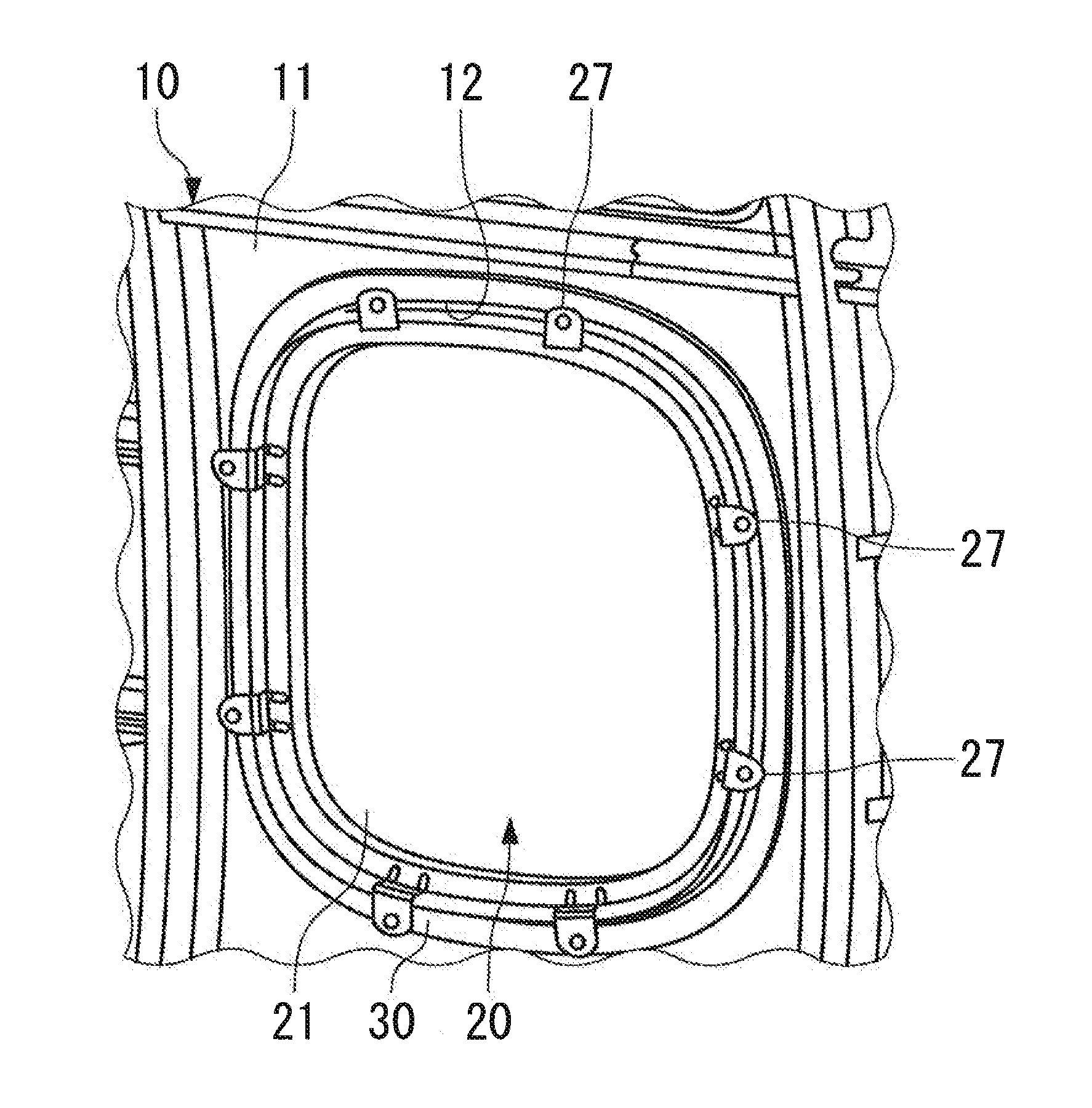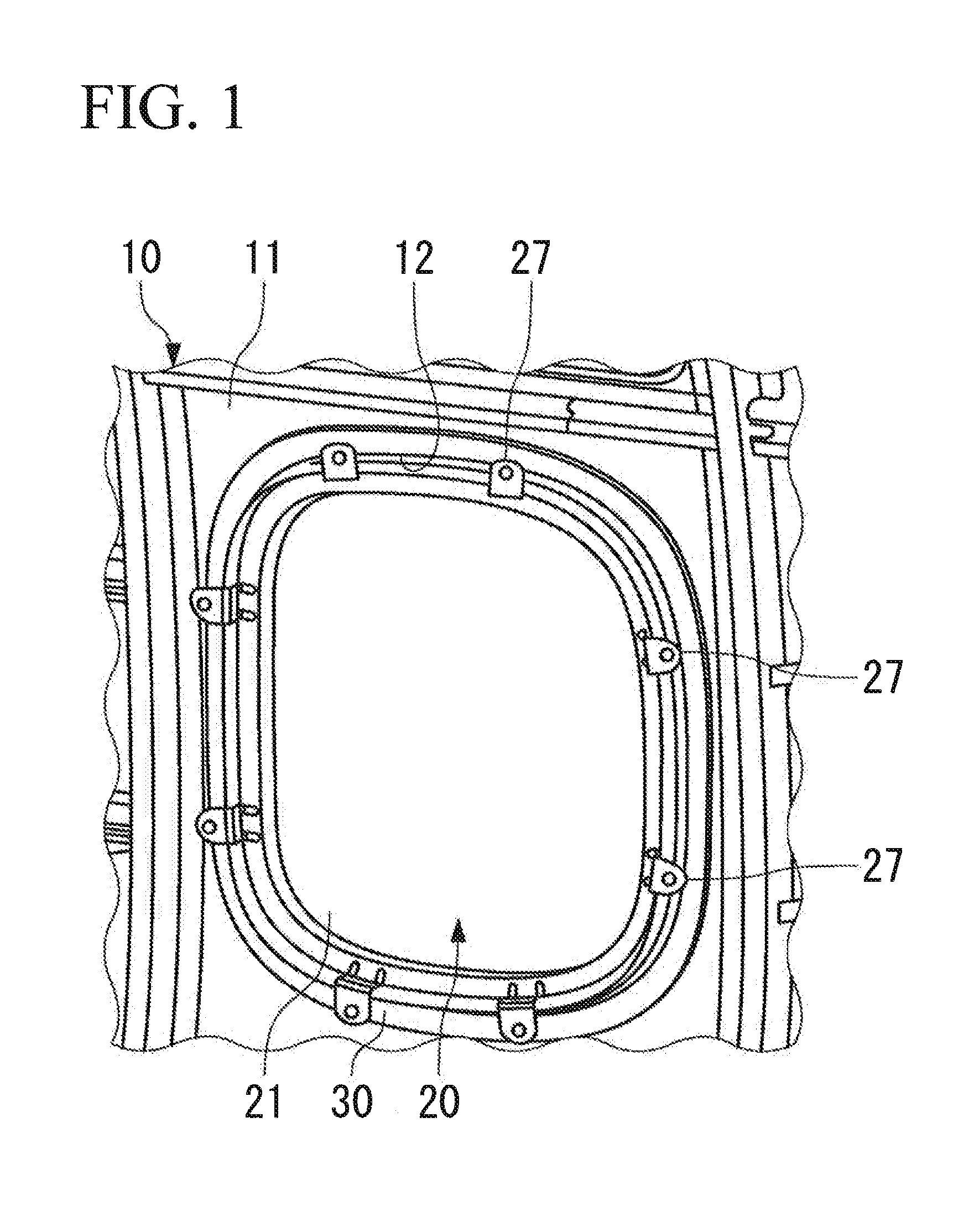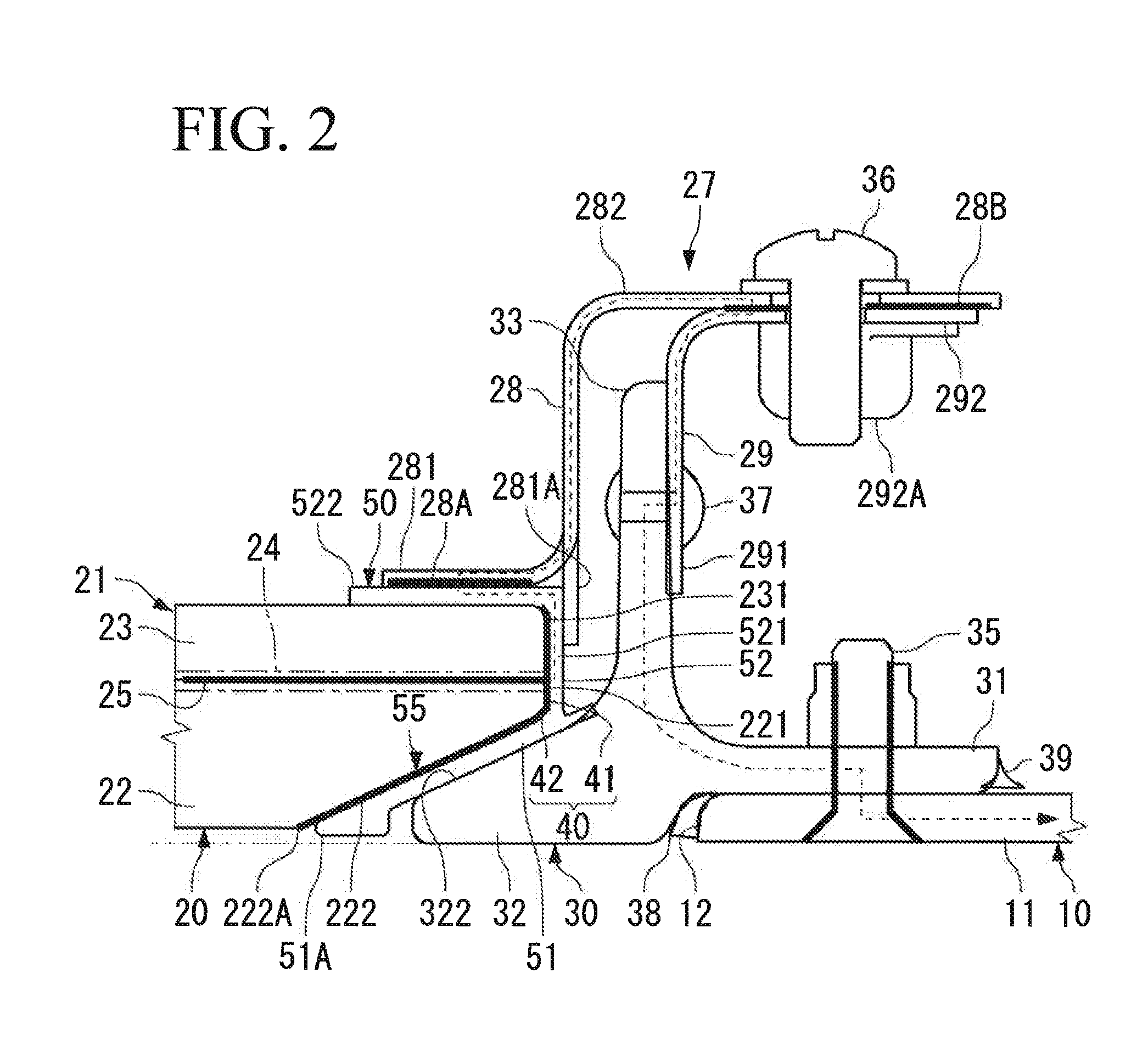Aircraft window, closing member for opening portion, and aircraft
- Summary
- Abstract
- Description
- Claims
- Application Information
AI Technical Summary
Benefits of technology
Problems solved by technology
Method used
Image
Examples
first embodiment
[0054]FIG. 1 shows a window 20 that is provided in a cabin of an aircraft.
[0055]The window 20 is provided in an opening portion 12 that is formed in a skin 11 constituting an airframe 10 of the aircraft. The window 20 includes a window body 21 having light transmissibility, and a window frame 30 that surrounds the window body 21. The window body 21 is fixed to the skin 11 via the window frame 30 by a fixing members 27 arranged at a plurality of positions along the peripheral edge of the opening portion 12.
[0056]As shown in FIG. 2, the window body 21 includes two window panels 22 and 23, and an electromagnetic shield mesh (an electromagnetic shield layer) 25 that is interposed between the window panels 22 and 23. The electromagnetic shield layer 25 is formed into a plane size substantially equal to that of the window panels 22 and 23.
[0057]The window body 21 is a laminate including the window panels 22 and 23 and the electromagnetic shield layer 25.
[0058]The window panels 22 and 23 c...
second embodiment
[0145]Next, an aircraft window according to a second embodiment of the present invention is described with reference to FIG. 8.
[0146]In the second embodiment, differences from the first embodiment are mainly described. The same components as those of the first embodiment are assigned the same reference numerals.
[0147]The window of the second embodiment includes a first conductive layer 61 that is formed on the side surface (the end surface) of the window body 21, and a non-conductive gasket 70.
[0148]The first conductive layer 61 is formed on the side surface 221 of the window panel 22, and is brought into conduction with the outer periphery of the electromagnetic shield layer 25. The first conductive layer 61 does not extend to the inclined side surface 222 of the window panel 22 facing the holding section 32 of the window frame 30. An end portion on the airframe outer side of the first conductive layer 61 is located at a corner portion C formed by the side surface 221 and the incli...
PUM
 Login to View More
Login to View More Abstract
Description
Claims
Application Information
 Login to View More
Login to View More - R&D
- Intellectual Property
- Life Sciences
- Materials
- Tech Scout
- Unparalleled Data Quality
- Higher Quality Content
- 60% Fewer Hallucinations
Browse by: Latest US Patents, China's latest patents, Technical Efficacy Thesaurus, Application Domain, Technology Topic, Popular Technical Reports.
© 2025 PatSnap. All rights reserved.Legal|Privacy policy|Modern Slavery Act Transparency Statement|Sitemap|About US| Contact US: help@patsnap.com



